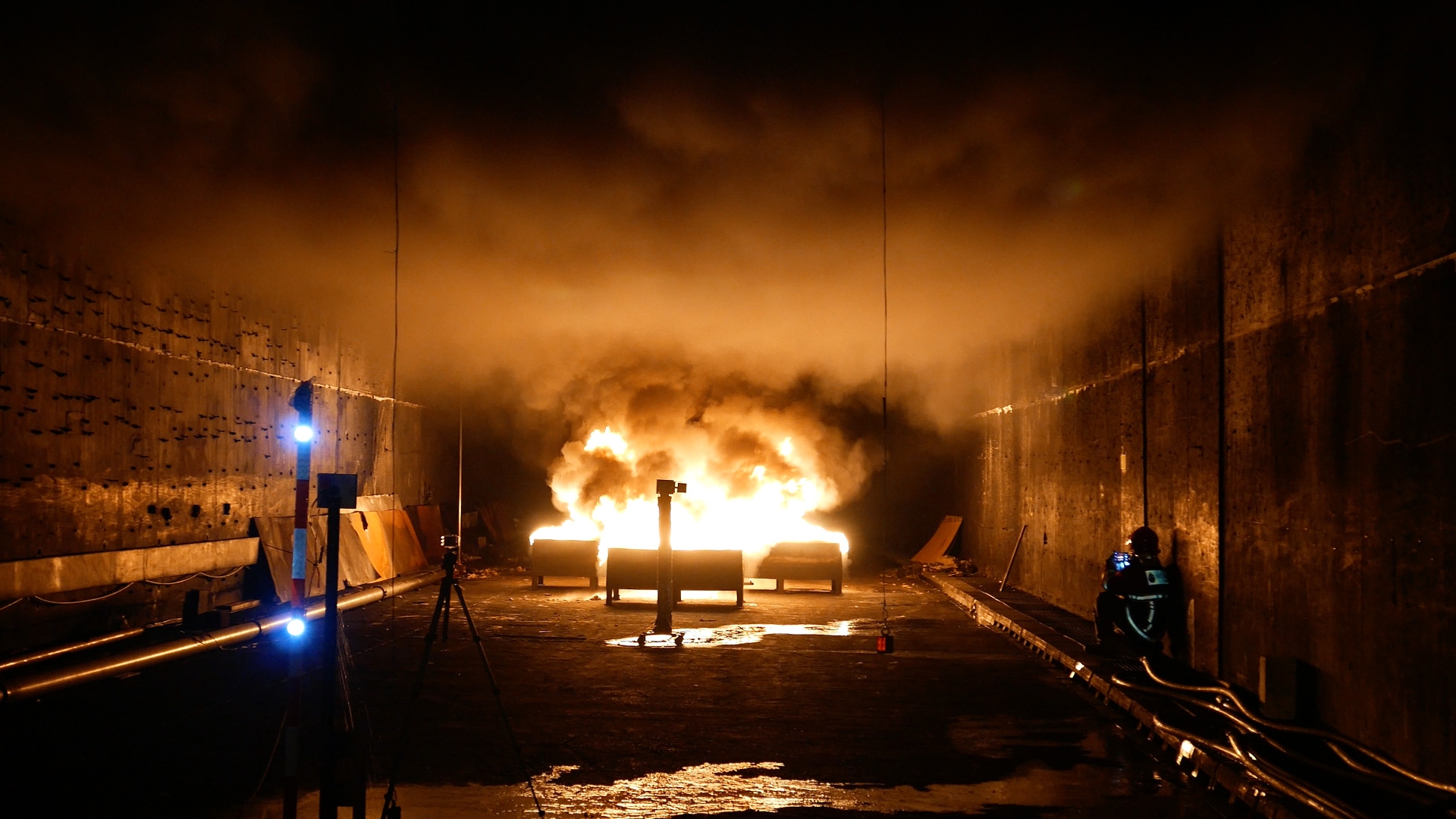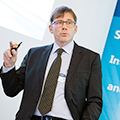Full scale tests of low pressure water-mist system

The main focus for these tests are the tenability requirements in the NFPA 502, structural safety above and in the vicinity of the fire and fire spread to other surrounding objects.
The fuel load in this test is 20 MW (diesel trays ignited with gasoline) and the test was performed with a ventilation rate of 1,5 - 2,5 m/s at the beginning of the test.
The watermist system is a Tunprotec system, model N-pipes type 3V, spacing 9,5 m x 1 m and with a length of 75 meter (simulation of 3 sones, 25 meter each). Fire location offset 0,5 sone towards upstream ventilation.
The test procedure included pre-burn time of 2-3 minutes, test time 30 minutes and manual extinguishment.
The results so far indicates that a low pressure water-mist system are as good as any other active fire suppression system, and are handling the tenability requirements in NFPA 502, requirements set to structural safety above and in the vicinity of the fire and requirements set for fire spread to other surrounding objects. A low pressure system uses less water, and this is important when it comes to spread of liquids (especially in tunnels with an incline), but also a less need for capacity in a drainage system compare to other active fire suppression systems.
In addition to introduction to the tests, fire topics and what is important to solve with a fire suppression system, presentations was given from international experts within relevant topics for tunnel safety.
Arnold Dix, a well-known expert on fire and life safety, presented "The changing face of risk - The importance of innovation and enhancement of fire suppression in our changing world". Dr. Fathi Tarada, a leading expert in fire safety engineering, tunnel ventilation, and computational fluid dynamics, presented "Ventilation design in a tunnel with fire suppression including compensation effects" and "Alternative longitudinal ventilation systems and their effects on fire suppression". Dr. Bas Lottman, from Witteveen+Bos, presented "Spalling mechanism decisive for structural fire safety of tunnels". And myself presented "Challenges with road tunnels and need for standardisation".
A very interesting technical visit and good discussions on relevant topics. A special thanks to the host and to Applus+ for the introduction to "San Pedro de Anes" the Experimental Centre in Oviedo, Spain.
Read more about the test centre: Link to article
Weblinks:
VID Fire Kill ApS: Link
Applus+ "San Pedro de Anes" Experimental Centre: Link
Efectis: Link

 En
En 
